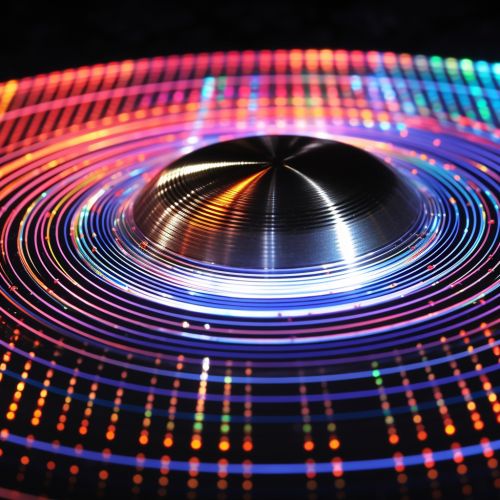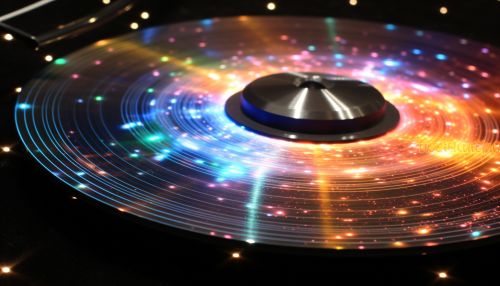Optical Disc
Overview
An optical disc is a data storage medium that can be written to and read using a laser. Developed in the late 20th century, they were a significant innovation in the field of data storage technology, offering superior durability and lifespan compared to previous storage mediums such as magnetic tapes and floppy disks.


History
The development of the optical disc began in the late 1960s with the work of James T. Russell, an American inventor. Russell's work led to the creation of the first optical disc, a 12-inch platter that used analog video signals. Over the following decades, the technology was refined and improved, leading to the creation of the compact disc (CD) in the 1980s by Philips and Sony.
Types of Optical Discs
There are several types of optical discs, including CDs, digital versatile discs (DVDs), and Blu-ray discs. Each type of disc has its own specific characteristics and uses.
Compact Discs
The compact disc (CD) was the first widely used optical disc and remains in use today for audio storage. CDs typically have a storage capacity of 700 MB.
Digital Versatile Discs
The digital versatile disc (DVD) was developed in the mid-1990s as a higher-capacity alternative to the CD. DVDs can store significantly more data than CDs, with single-layer DVDs having a capacity of 4.7 GB and dual-layer DVDs having a capacity of 8.5 GB.
Blu-ray Discs
The Blu-ray disc is the most recent major development in optical disc technology. Blu-ray discs offer even greater storage capacity than DVDs, with single-layer Blu-ray discs having a capacity of 25 GB and dual-layer Blu-ray discs having a capacity of 50 GB.
Data Storage and Reading
Optical discs store data in a series of microscopic indentations on the disc's surface. These indentations, or "pits," are arranged in a spiral track that starts at the center of the disc and winds its way to the edge. A laser is used to read the data on the disc by reflecting off the pits and lands (the flat areas between the pits) and detecting the changes in reflectivity.
Advantages and Disadvantages
Like all storage mediums, optical discs have their advantages and disadvantages.
Advantages
Optical discs are highly durable and have a long lifespan, making them ideal for long-term data storage. They are also relatively inexpensive to produce, and their compact size makes them easy to transport and store.
Disadvantages
One of the main disadvantages of optical discs is their limited storage capacity compared to other storage mediums such as hard drives and solid-state drives. Additionally, the data on optical discs can only be read with a laser, which means that the disc must be inserted into a compatible reader device.
Future of Optical Discs
While the use of optical discs has declined in recent years due to the rise of digital downloads and streaming services, they remain a viable storage medium for certain applications. For example, optical discs are still widely used in the film industry for the distribution of movies and television shows.
